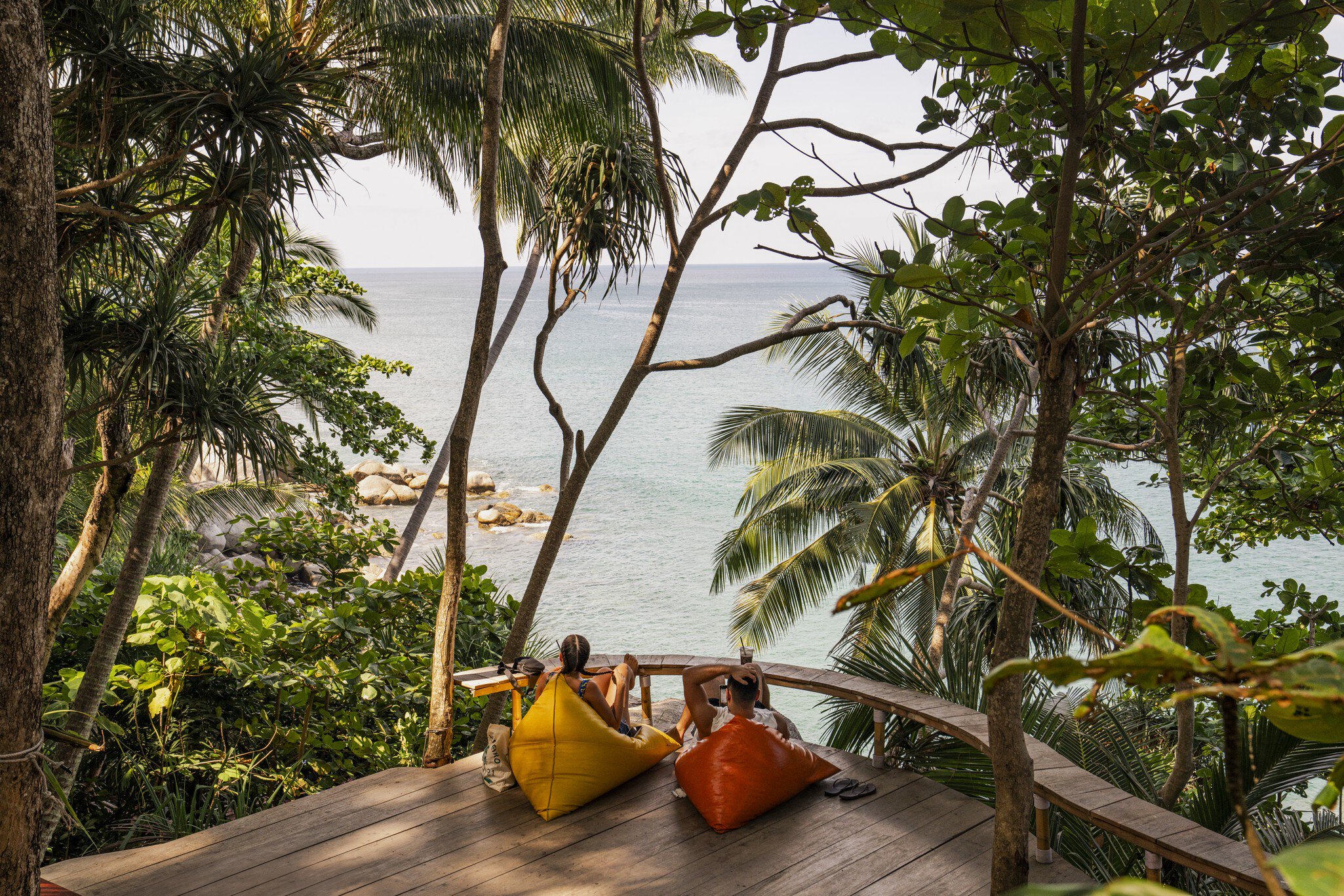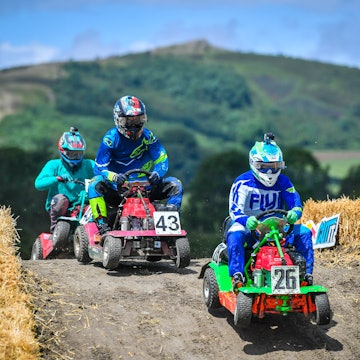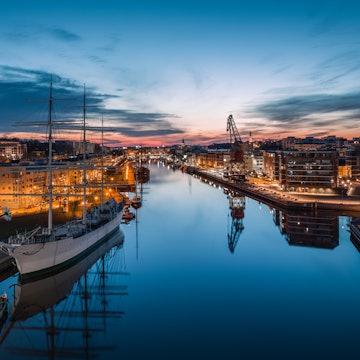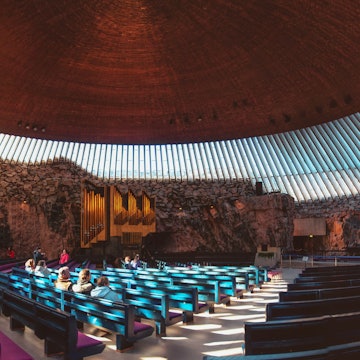
Finlandโs big three: cultured cities on the edge of epic wilderness
Sponsored by

Aug 5, 2025 • 11 min read

Helsinki Cathedral. f11photo/Shutterstock
Even when youโre right in the thick of city life in Finland, you can sense that everyone is itching to be outdoors or longing for that precious moment when they can strip off after work, head to the sauna and dive into gaspingly cold water. Helsinki and the Baltic-smashed islands of the south; Tampere, with the fretwork of piercing blue lakes and the forests of Finnish Lakeland on its doorstep; Rovaniemi as the gateway to the Arctic and the frosty wonderland of Lapland โ cities in Finland slide into nature without missing a beat. And the national love of wilderness is mirrored and amplified in art, culture and some of the most phenomenal food youโll taste anywhere in the Nordic countries.
One of the best bits is getting from A to B. In a country that prides itself on sustainability, breezing from one city to the next by train (sometimes while traveling overnight) is quick, easy and a huge part of the fun. Here's how to combine visits to these three cities in Finland while still getting back to nature.

Helsinki
Back to nature
With 300 forming stepping stones across the brilliant blue Baltic Sea, Helsinki moves effortlessly between the cityscape and the outdoors. Forests, beaches and rocky islets are but a hike, paddle or bike or ferry ride away. The Finnish capital is among the worldโs greenest, cleanest cities โ here is practically second nature, exemplified by the Nordic concept of friluftsliv (getting outside, no matter the weather).
A huge chunk of Helsinki is parkland. Reaching from the center to the cityโs northern fringes, the vast (Central Park) wings you from Tรถรถlรถ Bay to primeval woodland. Come for hiking, and mountain biking trails, forest bathing, or cross-country skiing in the frosty white of winter. Waterfront Kaivopuisto is another great escape, with sculpture-dotted lawns for summer picnics and concerts, playgrounds, and gentle slopes for walking and winter sledding. Or pull up a chair for an alfresco coffee on Esplanadin Puisto, the graceful linden tree-lined boulevard designed by architect Carl Ludwig Engel in 1818.
Linger on a day trip out to Nuuksio National Park, a half-hour drive north of town, for hiking or cross-country skiing in glacier-gouged valleys and old-growth forests, home to elk, lynx and nocturnal flying squirrels. For a true nature escape, book a night in a lakeside .




Cultural highs
Avant-garde design, elegant art nouveau villas, galleries brimming with contemporary art โ Helsinkiโs cultural scene is rich and varied. If you have time for one only big hitter, make it the mighty island fortress of Suomenlinna, a UNESCO World Heritage site built by the Swedes in the mid-18th century, when it was called Sveaborg. Roam along the sea-bashed ramparts to take in the Russian Orthodox garrison church โ converted to an Evangelical Lutheran church in 1918 โ doubling as a lighthouse, the naval docks, the old bunkers and a maze of secret tunnels.
Back in the center, the metallic curve of Kiasma bears the hallmark of New Yorkโbased architect Steven Holl. Rotating exhibitions inside highlight boundary-pushing Finnish and international art, while outside, skateboarders perform jumps on the terrace.
In a stately neo-Renaissance building, Ateneum presents a roll call of Finnish art from the late 19th century to the 1950s. Unmissable is Akseli Gallen-Kallelaโs 1891 Aino Myth triptych, dancing with mythical scenes from Finlandโs national epic, Kalevala.
If cutting-edge design is more your bag, spend an hour or two in the Design Museum, where the permanent exhibition skips from Marimekko textiles to Eero Aarnioโs Ball Chair. You could tie this in with a self-guided spin around the ateliers and boutiques of the , with a chance to meet the makers. Design reaches a peak during Septemberโs , the biggest of its kind in the Nordic countries.
What's that, a sauna, you say? Helsinki has some beauties, including , out on its own speck of an island, where you can cool off with a skin-tingling dip in the sea post steam, and seafront , heated by wooden pellets. At the southern tip of the Helsinki peninsula is , where you can leap into an avanto (ice hole) carved out of the frozen Baltic in winter if you dare. Everyone goes mad for saunas during the long, light days of juhannus (midsummer).
Food scene
Glittering with Michelin stars, Helsinkiโs food scene is right up there with other Nordic capitals, with a growing number of chefs putting inventive twists on hyperlocal ingredients. For a taste of that starry wizardry, book a table at . An elevator glides up to the 14th floor, where the glass-walled restaurant seats diners with front-row views of the Baltic. Finnish cuisine is elevated to gourmet heights in a chefโs menu that waves a magic wand on seasonal ingredients. Just as special is , a graceful townhouse by the harbor, adding an Asian touch to Arctic flavors in exquisitely presented dishes like Finnish wild salmon with ginger and shiro soy, and pan-seared scallop with sunflower seed miso.
Provided you had the foresight to reserve well ahead, youโll be among the lucky few to dine at intimate, Michelin green-starred . It champions sustainability and seasonality in menus. Stunning dishes assembled from locally farmed, fished, homegrown and foraged produce (perhaps some smoked oxtail with woodruff barbecue sauce, spring onion slaw and caviar) are paired with natural wines and served at bare wood tables.
For a more casual bite, make your way to , Helsinkiโs historic market hall, to stock up on picnic fixings like cold-smoked reindeer ham and salami, smoked fish, ruisleipรค (sourdough rye bread), forest-picked berries and cloudberry jam. seafood stand is the go-to for freshly shucked oysters and salmon soup. On the boulevard, Helsinkiโs oldest patisserie, has been rolling out fantastic cinnamon buns since 1852.
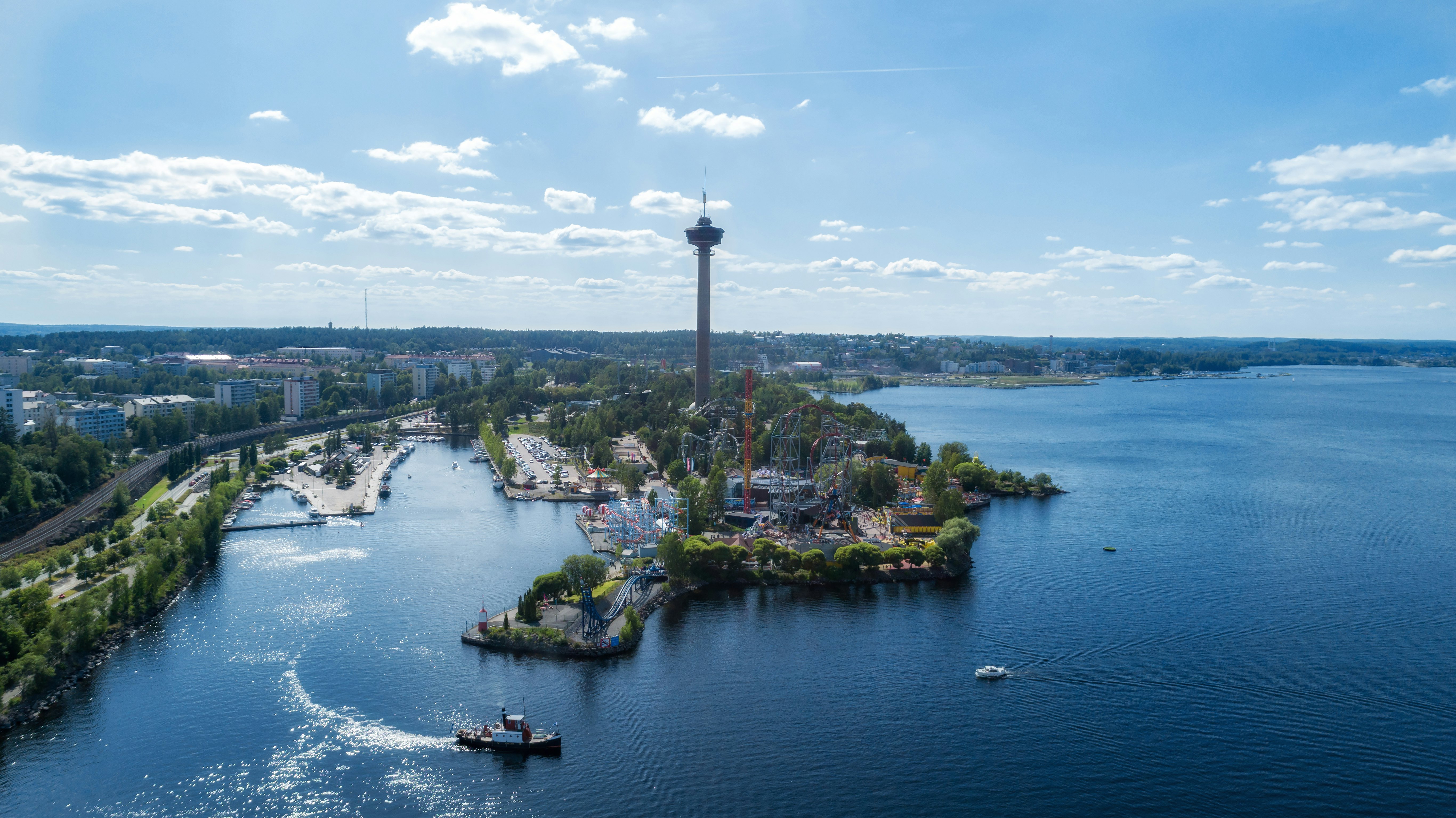
Tampere
Back to nature
Green and blue are the colors of Tampere, dropped between two forest-rimmed lakes โ Nรคsijรคrvi and Pyhรคjรคrvi โ in the heart of . Finlandโs second city delivers a hefty shot of wilderness; in fact, you can barely touch a map without dipping your finger into water. Cue big nature, whether youโre over to peaceful Viikinsaari, in quiet exhilaration to islands in the pink-gold of sunrise or Nordic skating across the lakes in the snowy white winter.
In Tampere's central forest, , you can hike through fragrant pines and, come summer, swim and paddleboard off the beach. In winter, you can even ski on the moraine ridge rising above it. Hiking boots are essential if you plan on exploring the on the cityโs green outskirts, for instance those heading deep into Helvetinjรคrvi National Park, with its glacier-sculpted gorge, wilderness huts and calm, mirrorlike lakes. Fancy a view from above? Head up the 168m (552ft) Nรคsinneula Tower for knockout views of the city and lakes.
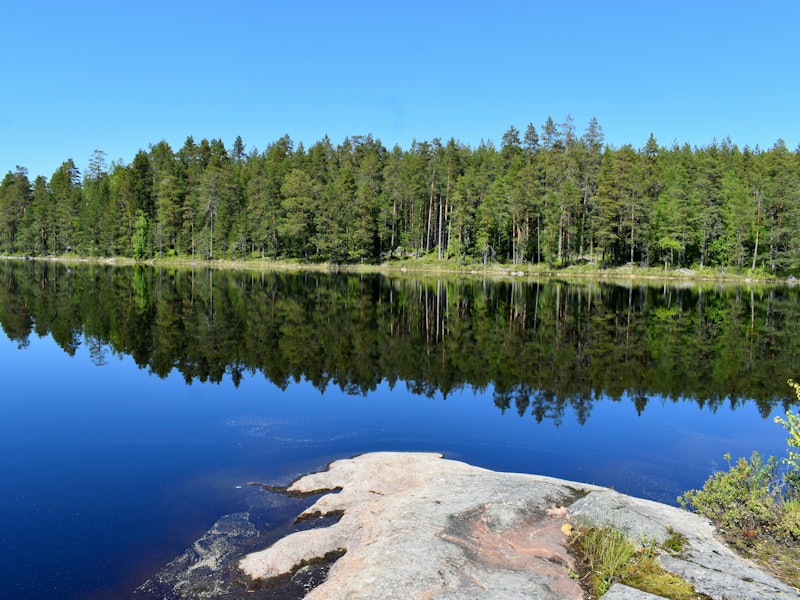

Cultural highs
Nature aside, Tampere moves to a cultured beat, fizzing with energy and fresh-faced creativity. The Tammerkoski rapids churn through the city, past the eye-catching red brick facades of revamped 19th-century fabric mills and that have been born again as museums, shops, bars and cafes. One of the most striking is Vapriikki, a former textile mill now spotlighting regional history and natural history, and hosting rotating exhibitions zooming in on everything from ancient DNA to superheroes through the ages. Dive into industrial heritage at Amurin Tyรถlรคismuseokortteli, where the wooden houses are a time capsule of workersโ lives from 1882 to 1973.
Tampereโs cathedral, Tuomiokirkko, is a vision of the National Romantic era of architecture. And kids adore the Moomimuseo, where Tove Janssonโs loveable white trolls are brought to life with original illustrations and dioramas.
Thereโs stiff competition in Finland, but Tampere is the de facto sauna capital. Ditch modesty and bring a towel to embrace the very Finnish ritual of sweating in a wood-heated cabin, maybe before an icy swim or a self-induced thrashing with a vasta (birch whisk). Top billing goes to , Finlandโs oldest public sauna still in operation, going strong since the early 1900s. For insight into the culture behind the steam, hook onto a .
From late October to early March, Tampere sparkles during the dark months at the , with light projections artfully illuminating city windows.
Food scene
Any food tour of Tampere should begin at the , the cityโs huge market hall. Stalls heave with fish, cheese, meat, rye bread and pastries. Snack on doughnuts, grab a coffee and cinnamon bun, or try regional specialities like mustamakkara (pork-blood sausage) served with lingonberry jam. Thereโs always a terrific buzz at , a French bistro in the marketโs heart dishing up fish soup and beef tartare.
In a former factory by the waterfront, puts a light French touch on a menu rooted in local ingredients, with brasserie classics like pike perch and pepper steaks joined by dishes like Finnish pork ribs with marinated tomatoes and tzatziki. More imaginative still is slickly contemporary , opposite the station, where the nature-led, hyperseasonal kitchen puts Japanese riffs on regional produce. Showstoppers like dry-aged Arctic char, marinated in white soy with plum, and mushroom tea served with sourdough brioche and cultured butter pack punchy flavors. Intimate bar looks to the wilds too, expertly mixing cocktails that are the prelude for dishes playing up fermented, foraged ingredients.

Rovaniemi
Back to nature
Throwing you into the Arctic deep end, Rovaniemi, capital of Finnish Lapland, is the stuff of your wildest childhood dreams. Starting from late August and running through early April, the northern lights rave in night skies โ one of the greatest shows on earth. Year-round this is a fantasy Finland of log cabins, reindeer bells and eternal Christmas.
There are a million and one ways to launch yourself into the wild here โ whether you arrive in the never-dying glow of the midnight sun or in the darkness of the polar night, when temperatures dip as low as -30ยฐC (-22ยฐF).
kicks off the summer with canoeing trips, husky rides through the taiga forest and visits to Sรกmi reindeer farms, where you can feed reindeer lichen and hear herders tell stories by a campfire. In winter, the action flicks to ice fishing, dog sledding, snowshoeing and snowmobiling as the aurora arcs and sways above.
Fall is often overlooked, but itโs a crazily scenic season for leaf-peeping โ or ruska, as Finns say โ with the forests blazing in shades of gold, rust and crimson. Head into the woods and you might well hear the bellow of rutting stags.

Cultural highs
Itโs Christmas every day in Rovaniemi, where youโre forever a kid at the atop the arctic circle, home to the one and only Santa, granting wishes in his grotto, and his tribe of elves, busy teaching tricks in their festive academy. Snowman trails and reindeer-driven sleigh rides are the icing on the (Christmas) cake.
Architecture mirrors the Arctic here, with the wavy lines of the City Library and Lappia Hall, designed by Finnish starchitect , echoing the undulations of the Lappish fells. Contemporary Finnish art gets its moment on the white walls of an old truck depot at Rovaniemen Taidemuseo, and at the 1930s bus depot revamped as the , concerts include performances by the Lapland Chamber Orchestra.
You can feel the heartbeat of Finlandโs indigenous Sรกmi culture in Rovaniemi. Learn more about the community at the architecturally striking Arktikum museum, with a glass tunnel reaching out to the Ounasjoki River and pointing the way north. Next door, hands-on science center is a surefire hit with kids, bringing the forest to life in interactive displays โ from climbing into a birdhouse to singing on an ant hill.
Food scene
Rovaniemi delivers the Arctic on a plate: hearty reindeer stews, tangy cloudberry desserts, fish plucked from crystal-clear rivers, forest-foraged mushrooms and berries sing loudly of the seasons. Unmissable dishes include poronkรคristys (pepper-spiced sautรฉed reindeer served with lingonberry jam, pickles and mashed potato); creamy, dill-laced lohikeitto (salmon soup); and leipรคjuusto (squeaky cheese) with cloudberry jam.
At the , fire-warmed, timber-clad, fur-draped is the kind of place where you just pray for snowflakes to fall. The menu riffs imaginatively on winningly fresh Lappish ingredients in dishes like moose tartare with lingonberry mayo and cloudberry crรจme brรปlรฉe. Rustic-chic โs menu is an ode to regional ingredients too. In the open kitchen, chefs busily prepare sour cream-braised porcini mushrooms with herb rye and pine tar-marinated salmon with conifer mousse and nettle bread. On looks alone, the candlelit wins, with wraparound glass windows framing dreamy views across snowy treetops. The menu is a love letter to the Arctic. A cloudberry spritz piques the appetite for dishes like reindeer carpaccio with egg yolk, capers and malt.
Plan your trip
Helsinki is brilliantly connected to the rest of the world, with operating regular direct flights to the United States, Europe and Asia. Thereโs no need to drive unless you want to. trains are fast, efficient and inexpensive: from Helsinki you can reach Tampere in two hours. From Tampere, take the night train to Rovaniemi; a journey of around eight hours. Board at 11pm and youโll wake up in Lapland at 7am. Cabins cost as little as โฌ49 (USD$57). The more flexible you are with dates and times, the cheaper the tickets. Heading from Rovaniemi back to Helsinki, you can either take an internal flight or go by night train. The journey takes between eight and 12 hours.
Sponsored by Visit Finland
As a travel entertainment and inspirational media outlet, we sometimes incorporate brand sponsors into our efforts. This activity is clearly labeled across our platforms.
This story was crafted collaboratively between Visit Finland and ฬวะฤดซรฝ. Both parties provided research and curated content to produce this story. We disclose when information isnโt ours.
With sponsored content, both ฬวะฤดซรฝ and our brand partners have specific responsibilities:
-
Brand partner
Determines the concept, provides briefing, research material, and may provide feedback.
-
ฬวะฤดซรฝ
We provide expertise, firsthand insights, and verify with third-party sources when needed.

